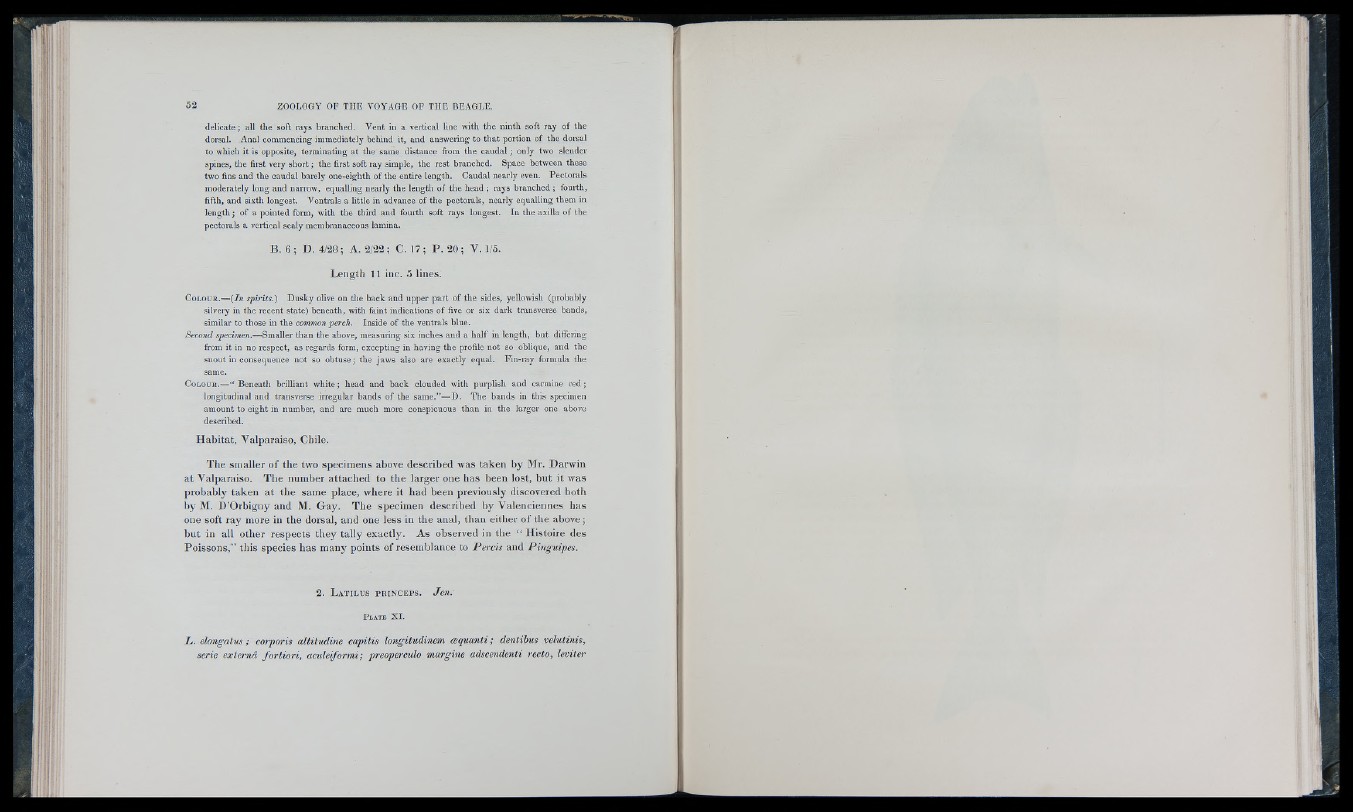
delicate; all the soft rays branched. Vent in a vertical line with the ninth soft ray of the
dorsal. Anal commencing immediately behind it, and answering to that portion of the dorsal
to which it is opposite, term inating a t the same distance from the c a u d a l; only two slender
spines, the first very sh o rt; the first soft ray simple, the rest branched. Space between these
two fins and the caudal barely one-eightli of the entire length. Caudal nearly even. Pectorals
moderately long and narrow, equalling nearly the length of the head ; rays b ranched; fourth,
fifth, and sixth longest. Ventrals a little in advance of the pectorals, nearly equalling them in
len gth ; of a pointed form, with the third and fourth soft rays longest. In the axilla of the
pectorals a vertical scaly membranaceous lamina.
B. 6 ; D. 4/28 ; A. 2/22; C. 17 ; P. 20 ; V. 1/5.
Length 11 inc. 5 lines.
C o l o u r .— (In spirits.) D usky olive on the back and upper p art of the sides, yellowish (probably
silvery in the recent state) beneath, with faint indications of five or six dark transverse bands,
similar to those in the common perch. Inside of the ventrals blue.
Second specimen.— Smaller than the above, measuring six inches and a h alf in length, but differing
from it in no respect, as regards form, excepting in having the profile not so oblique, and the
snout in consequence not so o btuse; the jaw s also are exactly equal. Fin-ray formula the
same.
C o l o u r .— “ Beneath brilliant w hite; head and back clouded with purplish and carmine red;
longitudinal and transverse irregular bands of the same.”— D. The bands in this specimen
am ount to eight in number, and are much more conspicuous than in the larger one above
described.
H abitat, Valparaiso, Chile.
The smaller of the two specimens above described was taken by Mr. Darwin
at Valparaiso. The number attached to the larger one has been lost, but it was
probably taken at the same place, where it had been previously discovered both
by M. D’Orbigny and M. Gay. The specimen described by Valenciennes has
one soft ray more in the dorsal, and one less in the anal, than either of the above;
but in all other respects they tally exactly. As observed in the “ Histoire des
Poissons,” this species has many points of resemblance to P ercis and -
2. L a t i l u s p r in c e p s . Jen:
P l a t e XI.
X. elongatus ; corporis altitudine capitis longitudinem cequanti ; dentibus velutinis,
serie externa fo rtio ri, aculeiformi; preoperculo m argine adscendenti recto, leviter